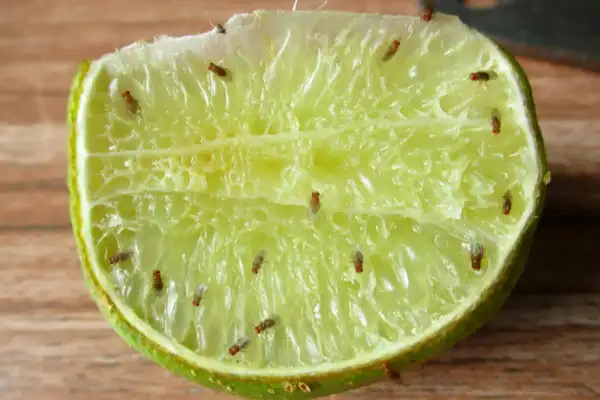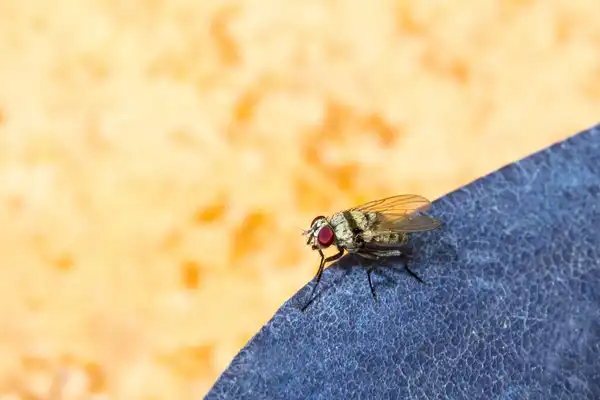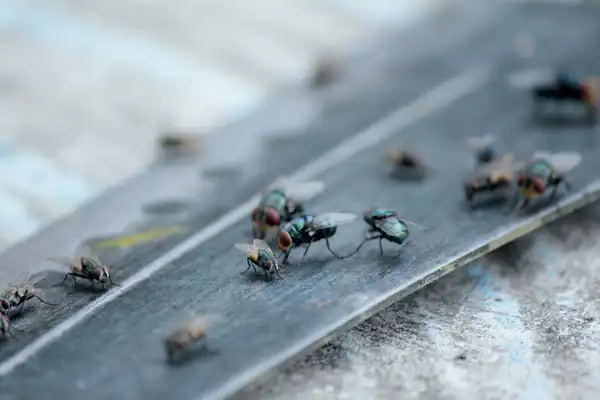It’s getting to be that time of year again. Just when it was finally getting nice out again, they return: the flies. Thousands of them. Hundreds of thousands of them. It seems like they’re everywhere, especially around your home. And all of a sudden!
What are these flies? Where are they coming from? Why now? Most importantly, what can you do about them? Don’t worry: we’re here to answer all your fly questions. Hopefully, we can help make your spring fly-free in the process.
What are the flies in my home?
There are several different common varieties of fly that commonly enter people’s homes. Each type of fly wants different things and behaves in different ways:
- House flies are amongst the most common insect pests infesting houses in Michigan. They’re ⅛ to ¼ inches long, dark grey, broad flies with dark stripes and dark red eyes. They live in garbage, particularly moist or rotting organic material.
- Fruit flies and specifically the common fruit fly Drosophila melanogaster are very common house infesters. These flies are only 3 to 4 mm long, tan or clear-colored flies with bright red eyes. Fruit flies live in fermenting liquids, especially sugary liquids.
- Blowflies are particularly common in spring and summer. They’re round, metallic green, blue, or copper-colored and only around ¼ to ½ inches long.
- Phorid flies look similar to a fruit fly. Both are very small (1/16 to ⅛ inches long), tan-colored, and have red eyes. Phorid flies are attracted to light, garbage, and humidity.
If you’re dealing with a fly problem this spring, chances are these are your culprits.

What do they want?
As you probably noticed, each of the flies we’ve listed has a few things in common. The big one? Garbage. Virtually every fly loves living around, reproducing in, and feeding on garbage. Even more specifically, they love moist, rotting, or fermenting organic material. They’re attracting to any garbage that rots, breaks down, or starts to smell.
Flies can live off of and produce eggs in a very thin film of moisture. Even runoff from plumbing leaks or condensation from drafts is enough. If you have flies in your home, then they’re probably using rotting material or humidity nearby as a nest. Most flies reproduce indoors constantly and frequently whenever they can.
Where did they come from?
Unfortunately, most of the flies in your home were probably born there. They lay eggs in thin films of moisture near food sources. When the eggs hatch, offspring feed and grow rapidly until they’re fully grown. Then, the fully-grown adults reproduce, and the cycle begins again.
Before they can start reproducing, however, the first generation has to get inside your home somehow. That can happen a couple of ways. First, the pests are very good at sensing temperature changes and smelling out rotting food. They’ll follow the smell of rotting food to drafts, then use small cracks to wiggle inside.

Why are they here now?
The speed of a flies’ life cycles is determined mostly by temperature. During warm seasons, most fly species complete their life cycles extremely quickly. Houseflies, for instance, may complete their life cycle from egg to adult in seven to ten days. The longer and warmer the summer, the more the pests will grow, mate, and spread.
Files have incredible reproductive capabilities: a single fruit fly, for instance, could lay up to 500 eggs. They seem especially prevalent in spring and summer because warm outdoor temperatures allow them to reproduce even more frequently. It’s not just you; they really are pretty much everywhere.
What can I do about them?
If you can keep pests from accessing moisture, you can keep them from reproducing in your home. Flies usually find moisture around garbage or another source of food. Keep garbage cans sealed whenever you aren’t using them. Take out all your garbage every night before bed. Rinse out and dry containers before disposing of them.
Pay close attention to possible plumbing leaks and other sources of runoff. Check under sinks in the kitchen and bathroom, especially around garbage. Consider investing in dehumidifiers for particularly humid areas of your home. Clean up and prevent any other sources of excess moisture, too. No matter how small it may seem, flies can and will use it.
Once established, flies can be annoyingly difficult to get rid of. It’s quite hard to find fly eggs, and once they hatch you’ll have a new generation to deal with. It’s much easier to avoid letting pests reproduce in your home in the first place. By following these tips, you can do just that.
Of course, maybe you already have flies in your home. In that case, we recommend giving Griffin Pest Control a call right away. Our experts can find and wipe out your fly infestation, no matter how hidden or entrenched. Don’t let flies ruin the nice weather for you; call today!

